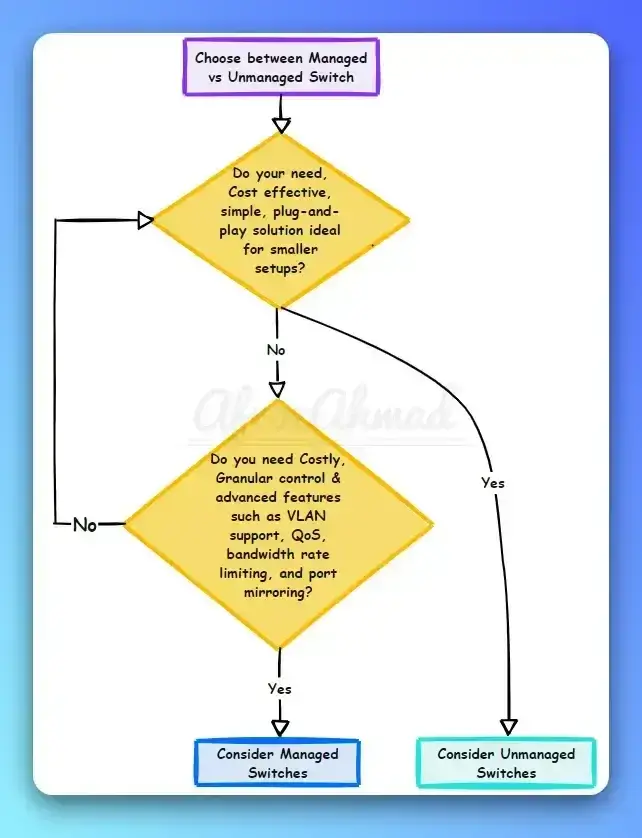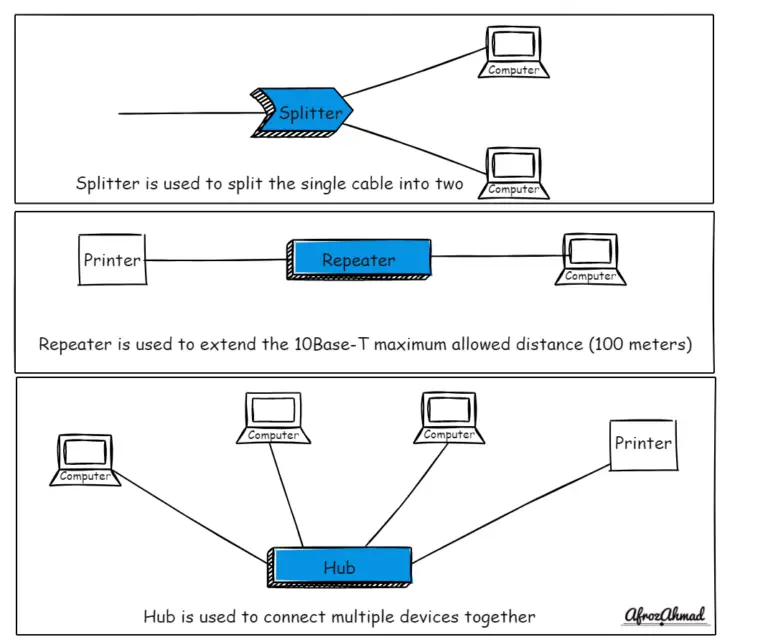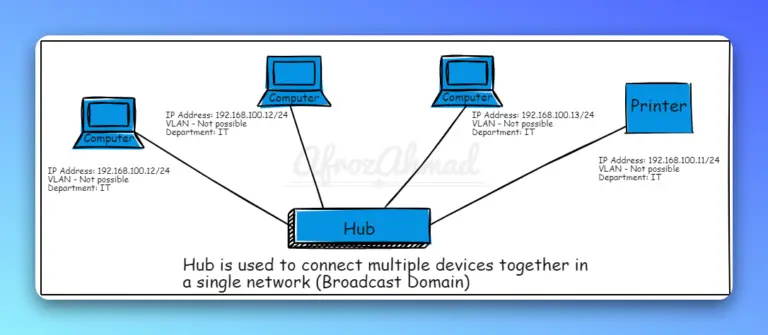Hi guys! I’m back, and as always, it’s great to connect. Life, as a network engineer, often pulls us into deep dives and complex projects, but I always make it a point to share what I learn. Today, we’re revisiting a fundamental yet incredibly powerful network segmentation tool: Private VLANs. While the core concepts remain timeless, the world of networking has evolved dramatically since this post was first published. So, let’s bring our understanding of Private VLANs (PVLANs) into 2025, exploring their continued relevance, modern configuration practices, and how automation now plays a pivotal role.
First off, let’s quickly recap: Why do we even use VLANs in our switches? And then, why layer Private VLANs on top of that?
A VLAN, or Virtual Local Area Network, is exactly what it sounds like. In a Cisco environment, the name truly is the recipe! As we learned from our CCNA studies, switches traditionally create a single broadcast domain (while segmenting collision domains per port). VLANs allow us to logically segment a single physical switch (or multiple switches connected via trunks) into multiple distinct broadcast domains. This means we can group ports and users, isolating their broadcast traffic from others. Remember, though: for devices in different VLANs to communicate, you still need a Layer 3 device – typically a router or a Layer 3 switch.
The Private VLAN takes this segmentation a significant step further. It allows us to split a single VLAN (broadcast domain) into multiple, more isolated sub-domains. This is achieved through a relationship between a primary VLAN and its associated secondary VLANs. The magic here is that even if devices are in the same IP subnet and belong to the same primary VLAN, their direct Layer 2 communication can be restricted. Think of a shared hosting environment, a multi-tenant data center, or a hotel network where guests in the same subnet (and theoretically the same VLAN) should absolutely not be able to “talk” directly to each other without passing through a router or firewall. PVLANs provide that crucial Layer 2 isolation.
The theory behind Private VLANs isn’t overly complicated, but its implementation can sometimes be confusing because Cisco (and other vendors) use specific terminology for port types. Let’s clarify those definitions, which remain consistent across modern platforms:
Key Private VLAN Port Types
In a Private VLAN setup, ports are categorized based on their communication capabilities:
- Promiscuous Ports: These are the “uplink” ports. They can communicate with *any* port within the primary VLAN, including other promiscuous ports, isolated ports, and community ports. Typically, a promiscuous port connects to a router, firewall, or a Layer 3 switch that provides inter-VLAN routing for the PVLAN sub-domains.
- Isolated Ports: These are the most restrictive ports. An isolated port can *only* communicate with promiscuous ports. It cannot communicate with other isolated ports, nor with any community ports, even if they share the same secondary isolated VLAN. This provides maximum isolation for end devices.
- Community Ports: These ports offer a middle ground. A community port can communicate with promiscuous ports *and* with other community ports that belong to the *same* secondary community VLAN. However, they cannot communicate with isolated ports or with community ports in a *different* secondary community VLAN. This is useful for groups of devices that need to collaborate but still require isolation from other groups.
Important Considerations for Modern PVLAN Deployments
A common misconception from older Cisco documentation was that switches *must* be in VTP transparent mode to configure PVLANs. This is no longer true for modern Cisco IOS XE, NX-OS, and most other vendor platforms. PVLAN configuration is independent of VTP mode on contemporary switches like the Catalyst 9000 series or Nexus switches. You can configure PVLANs in VTP client, server, or transparent mode without issue. Focus on your specific platform’s documentation.
Another crucial point: Private VLANs operate at Layer 2. For devices in different secondary VLANs (or even different primary VLANs) to communicate, you still need a Layer 3 device. The promiscuous port connects to this Layer 3 device, which then performs routing based on IP addresses, subject to any Access Control Lists (ACLs) or firewall policies you apply.
Configuring Private VLANs: The Modern Approach (Cisco IOS XE)
Let’s update our configuration examples for a modern Cisco Catalyst 9000 series switch running IOS XE (e.g., version 17.x). The fundamental commands are similar to classic IOS, but interface names, best practices, and the overall context are updated.
Here’s a simplified topology similar to the original post: Two switches (SW1, SW2) with end devices and a router. The goal is for end devices on SW1 (Gi1/0/6) and SW2 (Gi1/0/8) to be in the same subnet/primary VLAN but *not* communicate directly, while a Router (connected to SW1 Gi1/0/4) can talk to all. We’ll use VLAN 18 as the primary and VLAN 300 as the isolated secondary.
Step 1: Define Primary and Secondary VLANs Globally
First, we define our secondary PVLANs and specify their type (isolated or community). Then, we define the primary VLAN and associate the secondary VLAN(s) with it. This must be done on all switches that participate in the PVLAN.
! On SW1 and SW2 (or any participating switch)
vlan 300
private-vlan isolated
! This defines VLAN 300 as an isolated secondary VLAN
vlan 18
private-vlan primary
private-vlan association 300
! This defines VLAN 18 as the primary PVLAN and associates secondary VLAN 300 with it.
! You can associate multiple secondary VLANs (isolated and community) with a primary.
Step 2: Configure Interfaces
Now, we configure the interfaces based on their role (promiscuous, isolated, or community host). Note the use of `GigabitEthernet` interfaces, common on modern switches.
On SW1:
! Promiscuous Port (to Router)
interface GigabitEthernet1/0/4
description Uplink to Router1 for PVLAN 18/300
switchport mode private-vlan promiscuous
switchport private-vlan mapping 18 300
! This port maps the primary VLAN 18 to the isolated secondary VLAN 300 (and any other associated secondaries).
! This allows the router to communicate with all devices in the PVLAN.
! Isolated Host Port (to End Device 1)
interface GigabitEthernet1/0/6
description End Device 1 - Isolated in PVLAN 18/300
switchport mode private-vlan host
switchport private-vlan host-association 18 300
! This port is configured as an isolated host, meaning it can only talk to the promiscuous port(s).
! It cannot talk to other host ports (isolated or community) within the same primary VLAN.
On SW2:
! Isolated Host Port (to End Device 2)
interface GigabitEthernet1/0/8
description End Device 2 - Isolated in PVLAN 18/300
switchport mode private-vlan host
switchport private-vlan host-association 18 300
! Similar to Gi1/0/6 on SW1, this port provides isolation for End Device 2.
With this configuration, devices connected to SW1 Gi1/0/6 and SW2 Gi1/0/8 (both in primary VLAN 18, secondary isolated VLAN 300) will not be able to communicate directly with each other. They can, however, communicate with the Router connected to SW1 Gi1/0/4.
Verifying Private VLAN Configuration
CLI commands remain robust for verification:
show vlan private-vlan
! Displays primary/secondary VLAN associations and types.
show vlan private-vlan type
! Shows which VLANs are primary, isolated, or community.
show vlan private-vlan capability
! Shows hardware support for PVLANs.
show interface GigabitEthernet1/0/4 switchport | include private
! Verify interface-specific PVLAN configuration.
PVLANs in a Multi-Vendor World
While Cisco popularized PVLANs, similar segmentation capabilities exist across various network vendors. For example:
- Arista EOS: Arista switches support Private VLANs with a syntax that is intuitive for Cisco-trained engineers, often providing similar isolation and promiscuous port concepts.
- Juniper Junos OS: Juniper switches utilize “isolated VLANs” or “community VLANs” within a “primary VLAN” concept, achieving the same Layer 2 isolation.
- Dell OS10/N-Series: Dell also implements Private VLAN features, often mirroring the Cisco operational model.
The core concept of primary/secondary VLANs and restricted communication between host ports remains a common method for achieving advanced Layer 2 segmentation, regardless of vendor.
Automating Private VLAN Deployments in 2025
Manually configuring PVLANs on dozens or hundreds of ports is tedious and error-prone. This is where network automation shines! Modern network operations leverage Infrastructure as Code (IaC) principles to define and deploy configurations programmatically.
- Ansible: With Cisco’s `ios` and `ios_config` modules (or `dellemc.os10.os10_interface` for Dell, `arista.eos.eos_interface` for Arista, `juniper.junos.junos_interfaces` for Juniper), you can easily define PVLAN settings in YAML playbooks. Variables can manage primary, secondary, and interface assignments, ensuring consistency.
- Nornir: For more complex, Python-driven automation, Nornir provides a powerful framework to fetch inventory, apply configurations, and validate state across multi-vendor environments. You could write Python scripts that dynamically generate PVLAN associations and apply them.
- Cisco DNA Center & ACI: For larger, intent-based networks, Cisco DNA Center provides policy-driven segmentation, abstracting the underlying CLI commands. Similarly, Cisco ACI (Application Centric Infrastructure) offers powerful micro-segmentation capabilities through Endpoint Group (EPG) contracts, often providing even finer-grained control than traditional PVLANs by leveraging policy instead of VLAN tags directly.
Here’s a conceptual (non-executable) snippet of how an Ansible playbook might manage a PVLAN host port:
# Example Ansible Task (conceptual)
- name: Configure PVLAN Host Port on Cisco IOS XE
cisco.ios.ios_config:
parents: "interface GigabitEthernet{{ host_interface }}"
lines:
- "description {{ host_description }}"
- "switchport mode private-vlan host"
- "switchport private-vlan host-association {{ primary_vlan }} {{ secondary_vlan }}"
vars:
host_interface: "1/0/6"
host_description: "Automated Host Port"
primary_vlan: "18"
secondary_vlan: "300"
when: ansible_network_os == "ios"
PVLANs and Zero Trust / Network Observability
In the age of Zero Trust security, where no user or device is inherently trusted, PVLANs continue to serve as a foundational Layer 2 micro-segmentation tool. They enforce basic host-to-host isolation, complementing higher-layer security policies.
To ensure your PVLAN deployments are working as intended, robust observability is key:
- Model-Driven Telemetry (gNMI/NETCONF): Modern switches support streaming telemetry, allowing real-time collection of interface and VLAN state. Tools can subscribe to these data streams to immediately detect misconfigurations or deviations from the desired PVLAN state.
- Network State Validation Tools (e.g., Suzieq): Tools like Suzieq can collect network state information from various devices and provide a consolidated view of VLANs, interfaces, and connectivity, making it easier to validate PVLAN isolation.
- Automated Testing: Incorporate automated tests (e.g., using Python with `paramiko` or `netmiko`) into your CI/CD pipelines to verify PVLAN separation after any configuration change. Attempting pings or ARP requests between isolated hosts should fail, while communication to the promiscuous port should succeed.
Conclusion
Private VLANs remain a vital tool in the network engineer’s arsenal, particularly for securing multi-tenant environments, guest networks, or segmenting specific device groups. While the underlying theory of primary, isolated, and community VLANs holds true, the way we deploy and manage them has significantly advanced. From leveraging modern IOS XE and NX-OS platforms to automating deployments with tools like Ansible and Nornir, and validating with advanced observability, PVLANs are more powerful and manageable than ever before. Keep these modern practices in mind to build more secure, efficient, and scalable networks.
For further studies on PVLANs on modern Cisco platforms, you can check out the official documentation for the Catalyst 9000 series: Cisco Catalyst 9000 Series Switches – Configuring Private VLANs.
- 7 Best Budget Routers For Small Business Networks (Under $200) - December 22, 2025
- How to Configure a Secure Site-to-Site VPN on Cisco Firepower Complete Guide - December 3, 2025
- Jobs for Network Engineers: Roles, Skills & Pay - December 3, 2025



